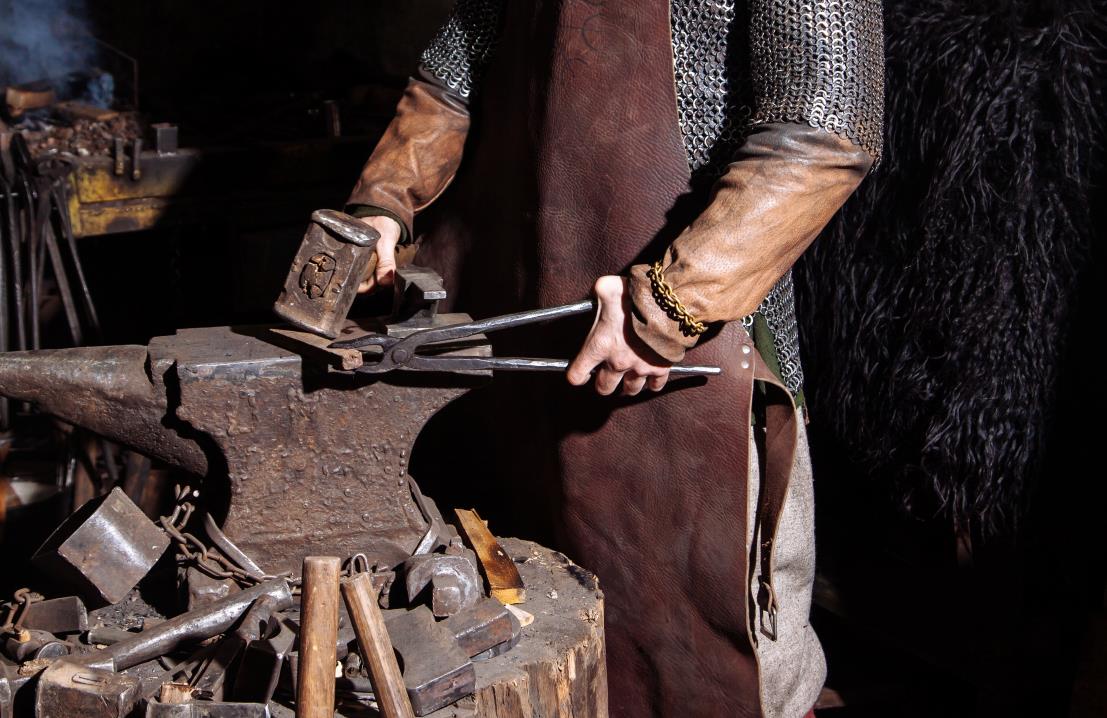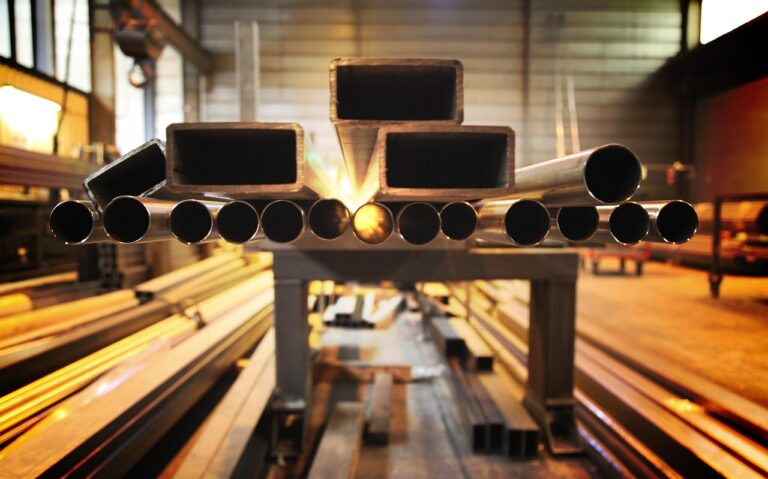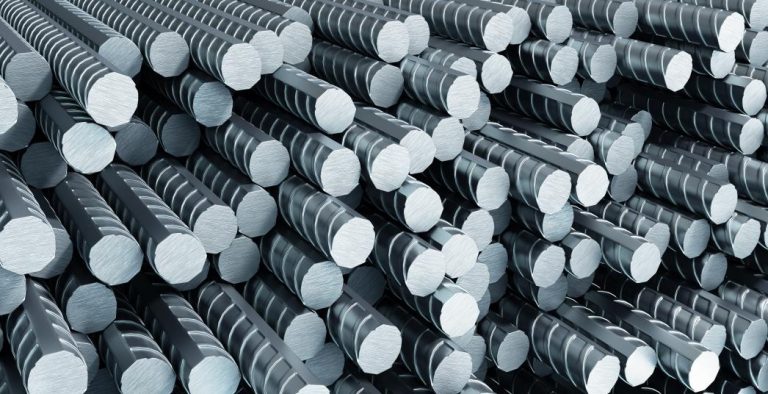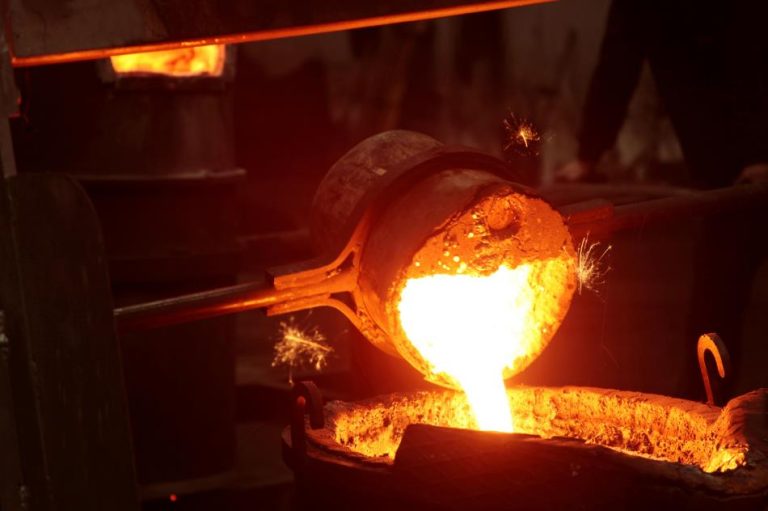X50CrMoV15 is a highly sought German steel, mainly used for making mid-range knives. It’s a pleasing choice for knife enthusiasts who value corrosion resistance and toughness more than anything. Popular German knife manufacturers like Wüsthof and Zwilling utilize X50CrMoV15 in their entry-level knives.
We can find X50CrMoV15 steel used for making varieties of kitchen cutlery, cleavers, and blades for kitchen electronics. There aren’t many pocket knives made from this steel. If you plan on designing your X50CrMoV15 pocket knives, it might be best to look for better-suiting alternatives.
In this article, we’ll cover everything about X50CrMoV15 steel, how it performs as a knife blade, and compare it to other similar steel.
X50CrMoV15 steel composition
- Carbon: 0.45 to 0.55%
- Chromium: 14 to 15%
- Molybdenum: 0.50 to 0.80%
- Manganese: 1.00%
- Vanadium: 0.10 to 0.20%
- Silicon: 1.00%
- Nitrogen: 0.60%
- Sulfur: 0.015%
- Phosphorus: 0.04%
X50CrMoV15 steel characteristics
The composition of X50CrMoV15 is interesting enough. Aside from carbon and chromium, X50CrMoV15 steel has nitrogen, which isn’t ordinary among knife steels. The 0.60% of nitrogen increases the hardness and yield strength of X50CrMoV15. The tiny amounts of vanadium contribute to edge retention, while molybdenum and manganese help with corrosion resistance and strength.
Here is a complete breakdown of what to expect from X50CrMoV15 steel knives, covering critical points, such as hardness and edge retention.
Hardness
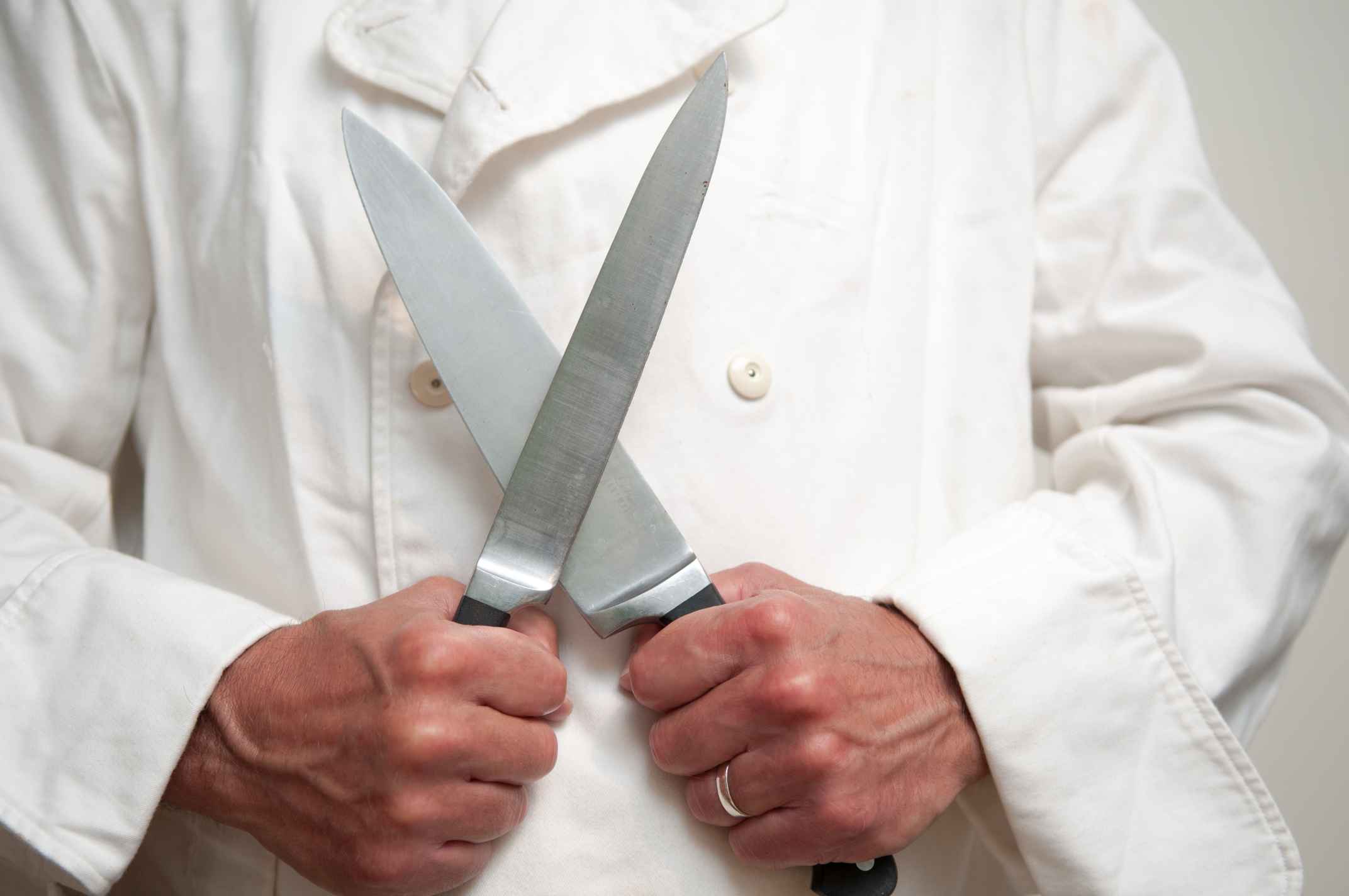
The hardness of X50CrMoV15 knife blades can be up to 56 HRc, with some being as soft as 52 HRc. The heat treatment and tempering done on the steel determines its hardness. Nevertheless, we can deem X50CrMoV15 as soft steel for knives in this hardness range. It certainly isn’t at the hardness point where professional chefs would want in their kitchen knives, but ideal for home cooks.
It would be incorrect to expect X50CrMoV15 to have high hardness anyways, as it only contains a maximum of 0.55% carbon. Other than carbon, nitrogen, vanadium, and molybdenum positively impact hardenability. Nonetheless, it isn’t hard steel. This affects how X50CrMoV15 performs as a knife blade in many factors.
Edge retention
Due to its low carbon mixup, X50CrMoV15 steel knives have a mediocre edge retention. Only the small amounts of vanadium help X50CrMoV15 steel keep an edge for longer, it doesn’t make a significant difference. In a fast-paced kitchen, it won’t satisfy the cook. However, it will get the job done in a home kitchen when preparing dinners. Using a honing rod in between meals will prolong the sharpness.
X50CrMoV15 kitchen knives are better suited for light cutting. Its performance on edge retention is one of the reasons why knife manufacturers utilize this steel for rather small, specialty blades, like paring knives. Undoubtedly, there are all-purpose X50CrMoV15 steel knives, but for regular use, we highly recommend something better.
Wear resistance

The wear resistance is largely influenced by hardness. Just as X50CrMoV15 doesn’t have outstanding hardness, the wear resistance is the same. However, it’s somewhat better than average steel around the same hardness. The vanadium and molybdenum carbides increase X50CrMoV15’s wear resistance.
Considering the type of tasks performed with a knife made from X50CrMoV15 steel, the wear resistance is more than adequate. When taken out for camping, cutting ropes or wood, there will be a question for wear resistance. In a kitchen environment, X50CrMoV15 will provide sufficient wear resistance without scars on the blade appearing so soon.
Toughness
Where hardness isn’t as great in knives, toughness tends to increase. X50CrMoV15 is no different. It has sufficient hardness that can absorb shock without any damage. Take an X50CrMoV15 steel chef’s knife and cut down poultry bones with powerful strikes. The edge is more than likely to survive. Take another blade with a higher hardness; we’re not going to say the same.
While the hardness of X50CrMoV15 may have a negative result on its edge retention and wear resistance for some users, it has a useful influence on toughness. X50CrMoV15 steel knives will bend or lightly twist rather than chip. This toughness makes the steel more durable, but it isn’t to say that nothing can happen. Regardless of the steel, employing the proper knife for the job is essential.
Furthermore, molybdenum adds up its tensile strength, somewhat making the knife more flexible. Manganese decreases brittleness, further adding to toughness. X50CrMoV15 knives tend to be flexible, and as a result, they have a bend to them. This is undoubtedly better than the blade shattering on you.
Corrosion resistance
So far, we’ve stated that X50CrMoV15 has a soft-to-medium hardness, mediocre edge retention and wear resistance, and good toughness.
Another area X50CrMoV15 performs greatly is corrosion resistance. It has an abundance of chromium, especially compared to the amount of carbon it contains. The carbon to chromium ratio is vital for corrosion resistance. Simply increasing both won’t deliver high hardness and incredibly corrosion-resistant steel.
X50CrMoV15 steel has better corrosion resistance than many other steels. The cooks that utilize German and French-styled knives highly favor this. As a result, X50CrMoV15 steel’s main use is with these types of knives. A seller trying to connect with customers leaning towards these areas – more so home cooks – can succeed with X50CrMoV15 steel kitchen knives.
Because X50CrMoV15 doesn’t have the wear resistance and edge retention outdoors requires, it’s more ideal for kitchen use. If these sound fitting for your customers, contact us for OEM services. X50CrMoV15 steel is also perfect for entrepreneurs dropshipping in the kitchen niche.
Buy Wholesale Knives and Start Scaling up with Us Today
Contact us and connect with a sales rep to get a free quote.
The steel’s wear resistance has a lot to do with its sharpening ease. Any steel with high wear resistance will require more elbow grease on a sharpening stone. As the steel resists shedding material from the edge, sharpening becomes challenging.
These problems aren’t apparent with X50CrMoV15 steel knives. The vanadium carbides could make sharpening more challenging, but the presence is only in minuscule amounts. It’s always a good trade to know the knife is easier to sharpen if it can’t keep a sharp cutting edge for a long duration.
Pros and cons of X50CrMoV15 steel kitchen knives
Pros
- Excellent corrosion resistance: X50CrMoV15 isn’t sensitive to rust. Resisting oxidation in the kitchen or humid environments is X50CrMoV15’s strongest suit.
- Good toughness: X50CrMoV15 won’t chip or break easily. The damages caused by forcefully cutting denser ingredients aren’t prevalent with X50CrMoV15 steel knives.
- Easy sharpening: Aside from quickly honing to restore the edge, sharpening X50CrMoV15 steel kitchen knives on a whetstone is straightforward. Most cooks won’t even see their whetstones dipping down after multiple sessions.
Cons
- Mediocre edge retention: X50CrMoV15 steel knives aren’t suitable for continuous use. The added vanadium and nitrogen boost edge retention but only to a small degree.
- Underperforming wear resistance: This isn’t a big issue in the kitchen. However, outdoors bring more wear and tear to knives. The underperforming wear resistance of X50CrMoV15 doesn’t make it ideal for outdoor use.
X50CrMoV15 steel vs. other knife steels
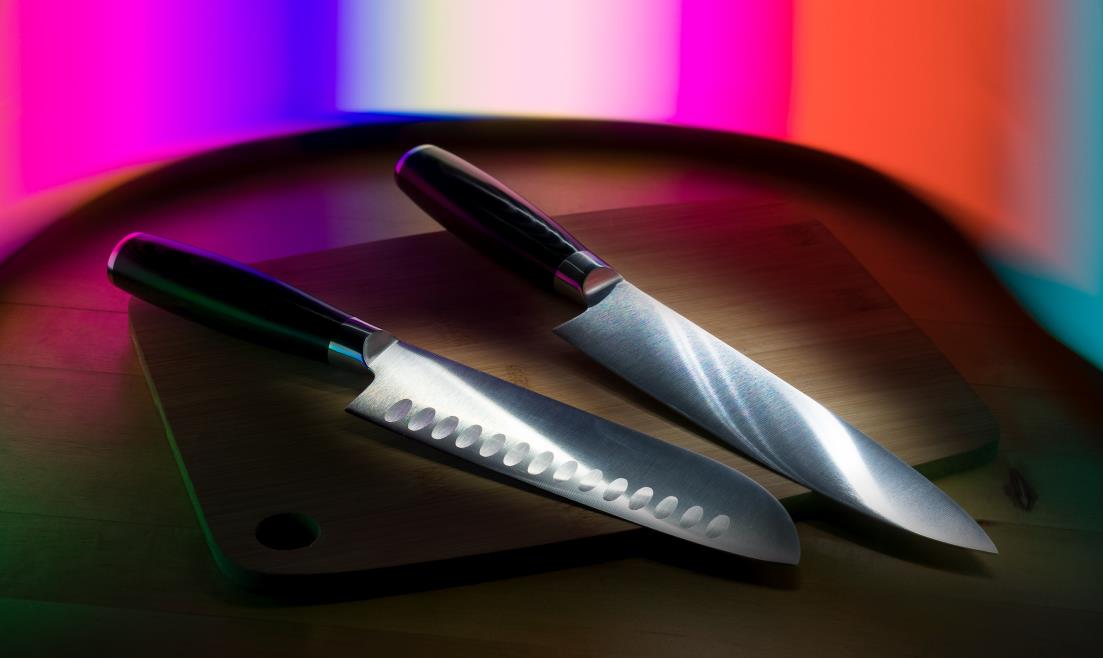
X50CrMoV15 steel vs. other German steel
- X55CrMoV14 is similar to X50CrMoV15 but with higher carbon content. The difference in carbon amounts between the two is only minor at about 0.10%. Still, this makes it different steel with better wear resistance. Victorinox, a popular Swiss Army knife maker, uses X55CrMoV14 to manufacture their knives. If you want similar attributes to X50CrMoV15 but for pocket knife use, X55CrMoV14 is the best alternative.
- X55CrMo14 and X55CrMoV14 are the same except for the vanadium. X55CrMo14 has more carbon than X50CrMoV15. The lack of vanadium makes it easier to sharpen and gives it a finer edge. It has better wear resistance than X50CrMoV15, making it ideal for EDC knives. Nonetheless, X55CrMo14 is more prevalent in kitchen knives, just like X50CrMoV15.
- X45CrMoV15 is a tougher alternative to X50CrMoV15 and has less carbon. The same as X50CrMoV15, its main uses are in kitchen cutlery. X45CrMoV15 is somewhat a better choice for large knives like Serbian chef’s knives and cleavers that cut with more force. The higher toughness enables X45CrMoV15 to perform better in these knives.
X50CrMoV15 steel vs. Japanese steel
Japanese and German steels don’t have much in common. Both cultures have different types of cuisine. The equipment that works the best for that cuisine varies. Japanese chefs favor hardness with incredible sharpness, while German chefs favor toughness and corrosion resistance.
Take VG-10 as an example. It’s Japanese steel with good hardness and edge retention but isn’t as tough as most German steel. This makes VG-10 more susceptible to chipping, but the uses also matter. Japanese cutlery has specialized knives for many different purposes. While western chefs turn to their all-purpose knives for most tasks, Japanese chefs tend to use their specialized knives, as the edge and hardness aren’t suitable at times.
Final words
X50CrMoV15 is tough and extremely corrosion resistant. It’s an ideal steel for western chef’s knives, paring knives, and more. X50CrMoV15 is fit for home cooks wanting a general-purpose knife to use in most aspects of preparing dishes.
It’s vital to identify your customers’ needs and pick the appropriate steel accordingly. The chances of success selling kitchen knives made from German steel to Japanese chefs is very slim. It’s the same the other way around, and for this reason, market research is essential. You can reach us for guidance on selecting the appropriate steel for your customers and the type of knives you’re anticipating selling.
